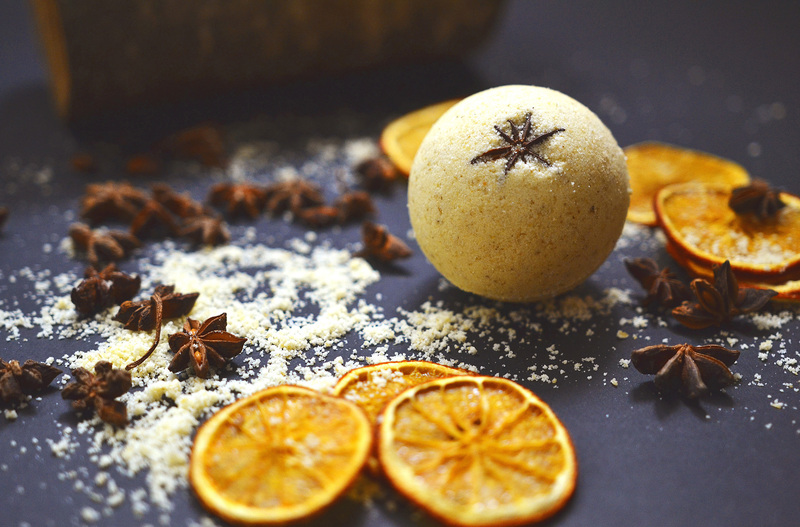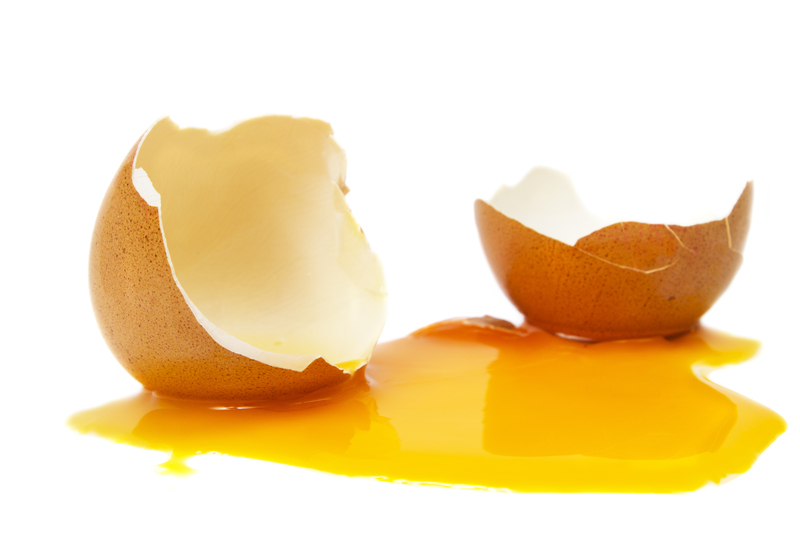Say Goodbye to Burnt-on Residue with These Stovetop Cleaning Tips
Posted on 27/05/2025
Say Goodbye to Burnt-on Residue with These Stovetop Cleaning Tips
Almost every home chef knows the struggle: you finish cooking a delicious meal only to find your stovetop covered in stubborn, burnt-on residue. These unsightly and often sticky stains can be tough to remove and may impact not just the appearance of your kitchen but also its hygiene. If you've tried everything and still can't get that sparkling finish, don't worry! With the right stovetop cleaning tips, you can restore your stove to its former glory.
Why is Stovetop Cleaning Important?
Keeping your stove top clean is about much more than aesthetics. Burnt-on food, grease, and grime can become breeding grounds for bacteria, attract pests, and even create fire hazards. Plus, regular cleaning ensures your cooking surface performs well and extends the life of your appliance.
- Sanitation: Accumulated residue harbors germs.
- Prevent Fire Risks: Grease build-up can catch fire.
- Maintains Appliance Efficiency: A clean stove top heats more evenly.
- Enhances Kitchen Appearance: A spotless stove improves your kitchen's look.

Common Challenges With Burnt-on Residue
Burnt-on food and stubborn stains may seem impossible to remove, particularly if they've been sitting for a while. Over time, these residues can become baked-on layers that conventional cleaning methods struggle to erase. Many people worry about causing scratches or damaging their stovetop finish, particularly with glass or ceramic cooktops, which require specific cleaning tools and products.
Types of Stovetops and How They Affect Cleaning
- Gas Stoves: Feature removable grates and burners. Often have more crevices for food to fall into.
- Electric Coil Stoves: Coils lift up for cleaning but can accumulate baked-on spills beneath.
- Glass/Ceramic Stovetops: Smooth, modern appearance but prone to scratching with abrasive cleaners.
- Induction Cooktops: Similar to glass, need gentle cleaning methods.
Top Tips for Cleaning Burnt-on Residue from Stovetops
Ready to banish those unsightly stains? Here's a comprehensive guide to remove burnt-on residue from your stove without harsh chemicals or expensive tools.
1. Immediate Action: Clean Spills Quickly
- Wipe up spills as soon as they happen--once your stovetop has cooled enough to touch, use a damp cloth to remove fresh messes before they have a chance to harden.
- Avoid using harsh scrubbers immediately. For fresh burns, gentle cleaning is often sufficient.
2. Use Baking Soda Paste for Stubborn Spots
- Mix three parts baking soda with one part water to form a thick paste.
- Apply the paste directly onto burnt-on spots.
- Let sit for 15-20 minutes to loosen the residue.
- Wipe away gently using a soft sponge or microfiber cloth.
Baking soda is a natural abrasive that's safe for most surfaces and especially effective for glass cooktop cleaning.
3. Vinegar Spray for Grease and Burnt Residue
- Fill a spray bottle with equal parts white vinegar and water.
- Spray liberally over the burnt residue.
- Let the solution sit for at least 10 minutes before wiping away with a soft cloth.
Vinegar not only cuts grease but also dissolves mineral deposits and neutralizes odors.
4. Try a Razor Blade (For Glass Stovetops Only)
- Use with caution! Only use a new, clean razor blade at a flat angle on a chilled glass stovetop.
- Gently scrape off hardened residue, always keeping the blade nearly parallel to the surface to avoid scratches.
Never use this method on ceramic, coil, or gas burner stoves, as it may cause damage.
5. Commercial Stove Top Cleaners
- For tough jobs, choose a cleaner specifically made for your stovetop type (e.g., Weiman, Bar Keeper's Friend).
- Apply according to manufacturer instructions and always rinse thoroughly.
6. Soak Removable Parts
- Remove burner grates, drip pans, and knobs (if possible).
- Soak in hot, soapy water for 20-30 minutes.
- Scrub with a non-abrasive sponge, and if needed, use a paste of baking soda and water for stuck-on food.
7. Eliminate Odors with Lemon
- For a fresh finish, rub half a lemon over your stovetop after cleaning.
- Lemon juice is mildly acidic and adds a pleasant scent while helping cut through lingering stains.
How to Clean Different Types of Stovetops
Each stove top surface requires a unique approach to avoid causing unintentional harm.
Gas Stove Cleaning Tips
- Remove grates and burner caps.
- Soak grates in hot, soapy water--add a bit of baking soda for extra cleaning power.
- Use a stiff nylon brush or old toothbrush to scrub crevices.
- Wipe down the surface with a mix of water and vinegar.
- Pay special attention to gas ports--clean with a pin or needle if clogged.
Gas stoves can handle slightly more abrasive cleaning tools, but always avoid steel wool, which can scratch enamel finishes.
Electric Coil Stove Cleaning Tips
- Ensure the stove is off and coils are cool.
- Remove coils and wipe them down with a damp cloth (do not immerse in water).
- Clean drip pans and the surface with a mild degreaser or baking soda paste.
- Allow all parts to dry completely before reassembling.
Glass and Ceramic Stovetop Cleaning Advice
- Always wait until the surface is cool.
- Wipe away loose crumbs with a microfiber cloth.
- Apply a baking soda paste or specialized ceramic top cleaner.
- Use a non-abrasive sponge and, if needed, a razor blade at a flat angle for stubborn, burnt-on food.
- Buff dry with a clean, dry microfiber cloth for a streak-free finish.
Induction Cooktop Cleaning
- Clean with a soft cloth dampened with mild soapy water or white vinegar.
- Never use abrasive sponges or cleaners.
- Ensure there's no build-up that could interfere with cookware contact.
Natural Alternatives for Stove Top Cleaning
If you prefer eco-friendly solutions, you can say goodbye to chemical residue with these natural remedies:
- Baking Soda and Water: Natural, safe, and effective on most stains.
- Lemon Juice: A powerful degreaser that leaves behind a fresh scent.
- White Vinegar: Cuts through grime, dissolves hard water stains.
- Castile Soap: For regular maintenance and gentle cleaning.
Mix and match these ingredients for a powerful, homemade stove cleaning solution that is safe for your family and the environment.
DIY Stovetop Cleaning Solution Recipe
- Combine 1 cup white vinegar, 1 cup water, and 2 tablespoons lemon juice in a spray bottle.
- Shake vigorously to mix.
- Spray liberally over your stovetop, let sit, then wipe clean with a microfiber cloth.
Preventing Burnt-on Residue: Maintenance Tips
Prevention is the best way to keep your stove top sparkling clean in between deep cleans. Here are a few habits to keep burnt-on messes to a minimum:
- Wipe after every use. Even a quick swipe removes crumbs and grease before they have a chance to bake on.
- Use burner liners or drip pans when possible, making clean-up easier.
- Cover pots to avoid splatters when boiling or frying.
- Don't overfill pans, which can lead to spillovers.
- Clean up spills as soon as safe to do so to prevent hardening.
Weekly Maintenance Routine
Set aside a few minutes each week to:
- Remove and clean burner grates and knobs.
- Wipe the surface down with a vinegar-water spray.
- Buff glass or ceramic cooktops with a microfiber cloth.
This simple habit will help you avoid burnt-on residue before it becomes a serious problem.

Frequently Asked Questions About Stovetop Cleaning
What Is the Easiest Way to Remove Burnt-on Residue?
The simplest method is a baking soda and water paste, allowed to sit on the stain for 20 minutes before wiping. For glass or ceramic surfaces, use a razor blade at a shallow angle for extra-tough spots.
Can I Use Bleach on My Stove Top?
No! While bleach is a powerful disinfectant, it can damage many stovetop surfaces (especially stainless steel or ceramic) and may leave unsafe residues. Stick to gentler cleaners for daily use.
What Should I Avoid When Cleaning My Cooktop?
- Avoid steel wool and harsh scrubbing pads.
- Skip abrasive powders unless verified for your cooktop type.
- Don't use sharp tools on non-glass surfaces.
How Often Should I Deep Clean My Stove?
Ideally, deep clean your stovetop once a week to prevent burnt-on residue and keep your appliance in top shape. Quick daily maintenance further reduces build-up.
Are Commercial Glass Stove Top Cleaners Safe?
Most are designed to be safe and effective--always check your manufacturer's recommendations to ensure compatibility with your appliance model.
Final Thoughts: Enjoy a Sparkling Clean Stovetop Every Day
Burnt-on residue doesn't have to be a constant struggle. With these expert stovetop cleaning tips, you can tackle any mess--no matter how stubborn--and restore your stovetop's shine. From eco-friendly solutions like baking soda and vinegar to careful use of specialized tools, there's a cleaning method for every stove and every household. Incorporate these simple habits and products into your routine, and you'll enjoy a spotless, hygienic, and beautiful kitchen every day.
Say goodbye to burnt-on residue forever and hello to cooking with confidence on a gleaming stovetop!



